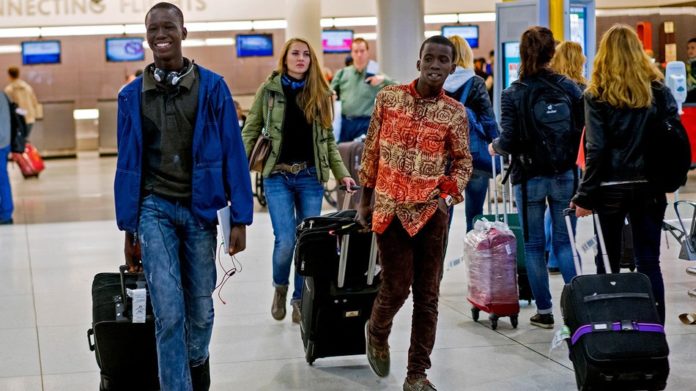U.S. Will Now Monitor All Travelers From Ebola Zone for 21 Days

Federal health officials announced Wednesday that all travelers from West African countries affected by the Ebola outbreak will be monitored for 21 days upon entering the U.S., in a new program scheduled to start Monday.
The new measures, announced by Tom Frieden, the director of the Centers for Disease Control and Prevention (CDC), represent a significant escalation in the government’s attempts to reduce the risk of additional Ebola cases in the U.S.
According to Frieden, the level of “active monitoring” will depend on whether a traveler had close contact with an Ebola patient. Someone who had little to no interaction with Ebola patients would have to self-report body temperatures to local health authorities, while someone who had significant exposure to a sick person’s bodily fluids would be fully quarantined.
“There are a variety of situations and it would be individualized,” Frieden said, speaking on a conference call with reporters. “We will require a quarantine for the highest risk group.”
The new measures will be implemented by six states: New York, Pennsylvania, Maryland, Virginia, New Jersey and Georgia. Those states are the destinations of about 70% of all travelers from Liberia, Sierra Leone and New Guinea. It wasn’t immediately clear how travelers to other states would be tracked.
On Tuesday, the government had already mandated that all travelers from the three countries fly to one of the five airports already screening for the disease, in New York, New Jersey, Chicago, Atlanta and Washington, D.C.
The new monitoring will cover visitors, aid workers, journalists, CDC employees and other Americans returning from Liberia, Sierra Leone or Guinea, and could be expanded if Ebola spreads to other countries.
Frieden said state and local health officials would check daily for fever or other Ebola symptoms. Passengers will get kits to help them track their temperature and will be told to inform health officials daily of their status. Check-ins could happen in person, via phone, Skype or FaceTime, or through employers.
Anyone who had close contact with Ebola patients in Africa would not be permitted to travel commercially via bus, rail, air or other means, until the end of the 21-day window, Frieden said. “If they have high risk and they are not sick, then they would need to be quarantined … and they would not be permitted to travel by commercial conveyance,” he said.
The monitoring window is three weeks long because that is the longest known period of incubation for the deadly Ebola virus, which has sickened nearly 10,000 in Africa and killed nearly 5,000, according to the World Health Organization.
Frieden said the new system will likely warn of more suspected cases of Ebola, since the start of flu season means that “it is not rare for people to have symptoms that may be consistent” with Ebola, such as a fever and headache.
As for when the monitoring program will end, Frieden says the U.S. cannot let its guard down until the outbreak in West Africa is over.
“This measure has been in the works for a long time,” Frieden said. “This is another step to protect families, communities and health care workers from Ebola.”
Three individuals have been diagnosed with Ebola in the U.S., including two nurses who treated the first patient, Thomas Eric Duncan, in Dallas. Since Duncan died on Oct. 8, the CDC has been scrambling to improve guidance to health care workers and assure the public that safeguards are in place to deal with additional travelers from West Africa who may be carrying the virus across the Atlantic.
Rejecting lawmakers’ requests for a travel ban from West Africa, Frieden said that once this program begins, there will be checks for signs of Ebola at the point of exit, entry, and for 21 days after entry.
“We can do a lot of things to reduce the risk … but until it is stopped at the source, we can’t make the risk zero here.”
Additional reporting by the Associated Press.
Have something to add to this story? Share it in the comments.
